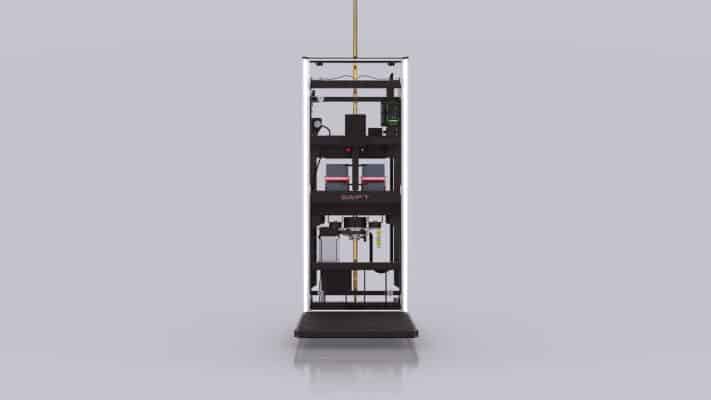What are the Advantages of Screw-Driven Lifts?
Screw type elevators, also known as screw-driven lifts, are an innovative solution originally developed in Sweden for use in public spaces such as museums, railway stations, schools, and shops. Today, they are increasingly popular in residential buildings due to their compact design, safety, and low maintenance requirements.
How Screw-Driven Lifts Work
The screw and nut mechanism is straightforward yet highly reliable. The lift car or platform is connected to a drive nut. When a user presses a control button, the motor rotates the nut in the desired direction. Rotating the nut upward raises the lift, while turning it downward lowers the lift. This simple mechanical principle ensures precise and safe movement.

Key Advantages of Screw-Driven Lifts
- Extremely Safe and Reliable
The screw-driven system is inherently safe due to its robust mechanical design. Even in case of power failure, the lift can remain stable, minimizing risk to passengers. SWIFT lifts integrate advanced safety features, making them one of the most secure home elevator solutions. - Compact and Space-Efficient
Screw type elevators require minimal space and limited structural modifications, making them ideal for homes with restricted areas. Unlike conventional elevators, no large shafts, deep pits, or machine rooms are necessary. - Smooth and Silent Operation
Thanks to the SWIFT EcoDrive system, screw-driven lifts operate quietly, providing a smooth ride that enhances user comfort. Noise is minimal compared to traditional hydraulic or traction elevators. - Low Maintenance Requirements
Screw elevators are designed for durability and longevity. Unlike conventional lifts that require frequent maintenance of cables, pulleys, and hydraulics, screw-driven systems need very little upkeep. This reduces long-term maintenance costs significantly. - Optimized for Low- to Mid-Rise Buildings
With maximum speeds ranging from 0.15 m/s to 0.3 m/s (outside Europe), screw-driven lifts are perfect for homes with 2 to 6 floors. They provide efficient vertical transport without the complexity or cost of high-speed traction systems.
Considerations and Limitations
While screw-driven lifts offer many advantages, there are some limitations. For homes with more than six floors, other elevator solutions, such as traction or hydraulic systems, may be more suitable. Additionally, screw lifts are generally slower than traction elevators, but for typical residential use, this is not a significant issue.
Conclusion
Screw type elevators combine safety, simplicity, and efficiency in a compact package. Their advantages of screw elevators—including minimal space requirements, smooth operation, low maintenance, and reliability—make them an ideal choice for modern residential homes. By understanding the disadvantages of screw lifts, such as limited speed for high-rise buildings, homeowners can make informed decisions to choose the best lift solution for their property.











